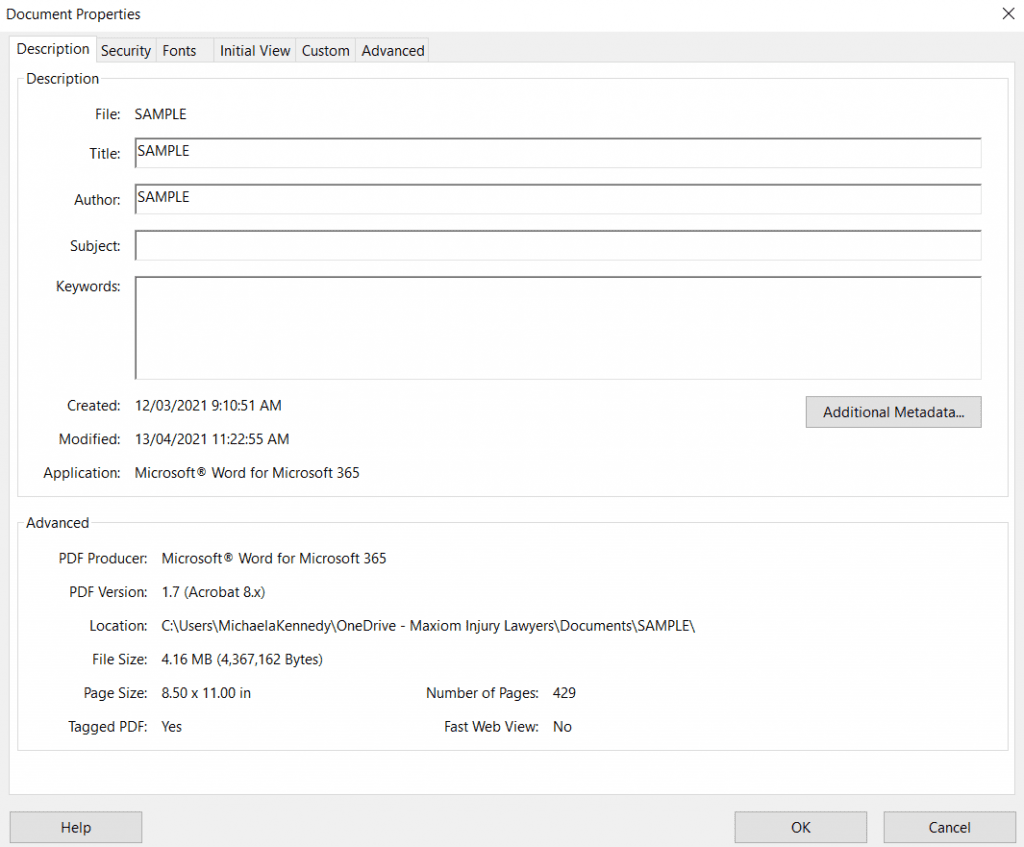I still get nightmares about the old dial up tone and I won’t long forget the shrill voices of my parents screaming at my siblings and I to get off the web so they could use the landline, however, I’ve been pretty lucky to witness the expansive growth of technology throughout my formative years.
I am categorised in the generation that knows everything about technology but what I have come to realise is that I might know a lot about how to operate technology, but I have little to no idea how it actually operates.
Take metadata, for example. Prior to starting my career at Maxiom Injury Lawyers in 2020, I didn’t have a clue what it meant. Now that I do, I can tell you I’ve never metadata I didn’t like.
What is Metadata?
Urban dictionary will tell you it is a fancy word for “information” invented by tech folks to make their jobs sound harder than they really are.
It is really just a set of data that describes and gives information about other data. Much like the iceberg that sank the titanic, what you see on the surface rarely indicates what is underneath.
Metadata and Personal Injury Litigation
As a personal injury lawyer, I review thousands of documents during the process of discovery. From time to time, some documents make me pause and question its authenticity.
Metadata only came onto my radar when I had a gut feeling something was NQR in one of our Workcover matters. Our client’s PIAWE (pre-injury average weekly earnings) calculation was incorrect as it didn’t include overtime. The Workcover Insurer advised that our client’s employer had provided employees with a notice five years ago which outlined that all overtime was cancelled and thus the calculation of overtime ought not be included.
As is the usual case, we had very different instructions. Our client was adamant he had never received such a notice, so we formally requested a copy from his employer. Once we received the notice, our client’s instructions didn’t change. Despite having confirmation that the notice existed in front of me, I took my client’s word and decided to investigate.
Through my research, I found that there was a way to view the document history by simply checking the metadata. As you might’ve guessed, when I checked out the metadata of the document, I quickly realised that the document was created and amended that day, and not some five years ago.
When we informed the insurer of our investigations, the argument disappeared faster than Harold Holt on a hot summer’s day down the coast, and our client’s PIAWE was calculated to correctly include the overtime allowances he was entitled to.
Technology has a major role to play in the way do business in law. You can’t always take someone’s word in real life and the same principles apply in the realm of technology. There is always more beneath the surface.
If everything were that simple, I might’ve accepted the email offers of various Princes to inherit their fortunes simply by providing my name, date of birth, bank details and TFN.
If you’ve made it this far, read on for a quick step-by-step guide on how to check the metadata of PDF documents:
STEP ONE:
Open the PDF File.
STEP TWO:
Select ‘File’ -> Properties.

STEP THREE:
Select ‘Additional Metadata’
STEP FOUR: Select ‘Description’. Here you will be able to see when the Document was first created and when/if it has been modified.

STEP FIVE:
Select ‘Advanced’ to see additional modification details.












